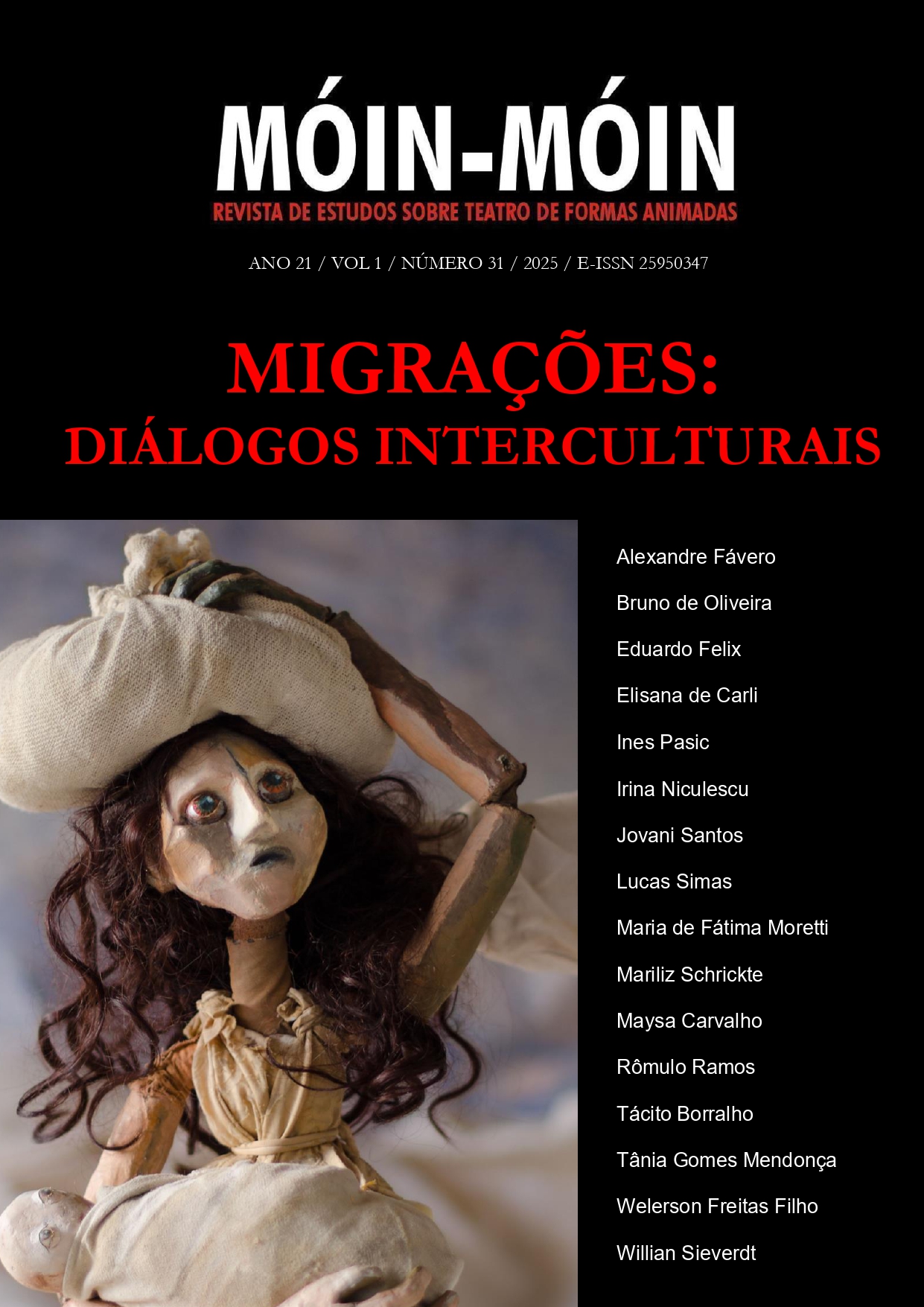Dom Roberto theater and mamulengo: coincidence or influence?
DOI:
https://doi.org/10.5965/2595034701312025036Keywords:
Animation Theater; nimated Forms Theater; Mamulengo Theater; Popular Theater; Dom Roberto TheaterAbstract
This article briefly presents a preliminary comparative study between the similarities and peculiarities of Portugal’s Teatro Dom Roberto and Brazil’s Mamulengo from Pernambuco. The aim of this research is to understand the relationships and similarities between these popular folk performances. The play, improvisation, historical details, and facts will be aspects to be analyzed in each manifestation, relating them to their cultural differences.
Downloads
References
AMARAL, Ana Maria. Teatro de Animação. São Paulo: Ateliê Editorial, 1997.
AMARAL, Ana Maria. Teatro de Formas Animadas: máscaras, bonecos, objetos. São Paulo: Edusp, 1991.
BRASIL. Ministério da Cultura. Dossiê Interpretativo Registro do Teatro de Bonecos Tradicional do Nordeste: Mamulengo, Casimiro Coco, Babau e João Redondo. Brasília: Iphan, 2014.
CAMAROTTI, Marco. Resistência e voz: o teatro do povo do nordeste. Recife: Ed. Universitária da UFPE, 2001.
FILHO, Hermilo Borba. Fisionomia e Espírito do Mamulengo. São Paulo: Companhia Editora Naciomal, 1966.
GIL, José Manuel Valbom. Teatro Dom Roberto - o teatro tradicional itinerante português de marionetas – O Saloío de Alcobaça e os novos Palheta. Portugal: Museu da Marioneta de Lisboa/EGEAC, 2013.
LARAIA. Roque de Barros - Cultura: um conceito antropológico. Rio de Janeiro, Editora Jorge Zahar, 1988.
SANTOS, Fernando Augusto Gonçalves. Mamulengo: o teatro de bonecos popular no Brasil. Móin Móin: revista de estudos sobre Teatro de Formas Animadas, Jaraguá do Sul, SCAR-UDESC, v.1, n. 03. 2007.
Downloads
Published
How to Cite
Issue
Section
License
Copyright (c) 2025 Móin-Móin Magazine - Studies in the Art of Puppetry

This work is licensed under a Creative Commons Attribution 4.0 International License.
The readers are free to transfer, print and use the articles published in the Magazine, as long as there’s explicit mention to the author(s) and to Móin-Móin Magazine - Studies in Theater of Animated Forms and there are no changes on the original work. Any other use of the texts needs to be approved by the author(s) and the Magazine. In submitting an article to Móin-Móin Magazine - Studies in Theater of Animated Forms and have it approved, the author(s) agree to give away, without payments, the following rights to the Magazine: first publishing rights and the license for the Magazine to redistribute this article and its metadata to index and reference services that the editors consider appropriate.
The articles whose author(s) are identified represent the author’s point of view and not the official position of Móin-Móin Magazine. The author(s) commit to always mention the publication in the following way when publishing work in reference to the article published in Móin-Móin Magazine:
“This article was originally published by Móin-Móin Magazine volume (insert the volume), number (insert the number), in the year of (insert year) and can be accessed on: http://www.revistas.udesc.br/index.php/móin"
Plagiarism in any way constitutes an unethical publishing behavior and is unacceptable. Móin-Móin Magazine holds the right to use software or other plagiarism tracking methods to scan the submitted works.
![]()
This journal uses Attribution-NonCommercial 4.0 International– (CC BY NC 4.0).






